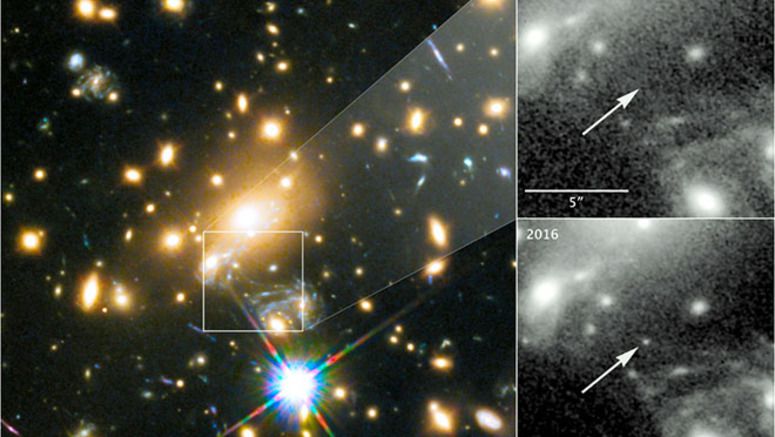Farthest Star Photographed With Cosmic Lens, Hubble Telescope

The farthest individual star to ever have been photographed, whose light has taken 9 billion years to reach Earth, was captured using cosmic lenses in an international research project by institutions including the University of Tokyo.
The achievement was announced in the digital edition of Nature Astronomy, a British science journal, on April 3.
The star was named Icarus after the research team discovered its glow within a very distant spiral galaxy by using NASA’s Hubble Space Telescope in 2015.
Icarus is an enormous astral body whose diameter is estimated to be 200 times that of the sun.
Galaxy clusters and phenomena such as supernova explosions have previously been observed at distances more than 10 billion light years away, but usually, the light of individual stars has been too faint to see.
The team focused on a phenomenon called "gravitational lensing," which bends and magnifies light while it travels through a massive galaxy cluster.
The researchers concluded that the light observed is an individual star when it turned out that the glow was amplified to about 2,000 times of Icarus’ emission, thanks to gravitational lensing.
"We have proved that it is possible to see stars that are sitting farther than what we had believed if there is dark matter or massive clusters of galaxies between the Earth and the observed star," said Masamune Oguri, assistant professor of cosmology and cosmological structure formation at the University of Tokyo.



















